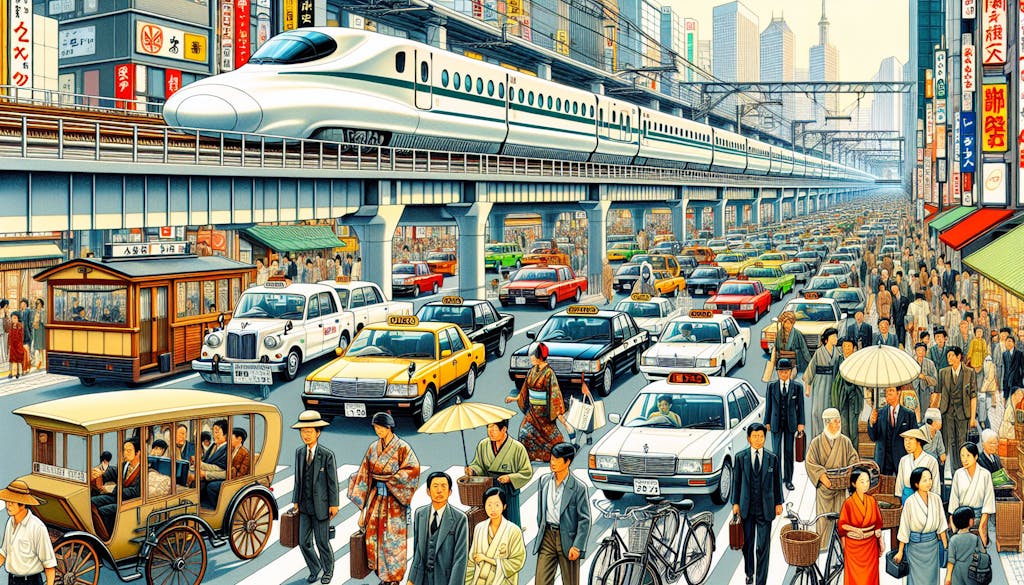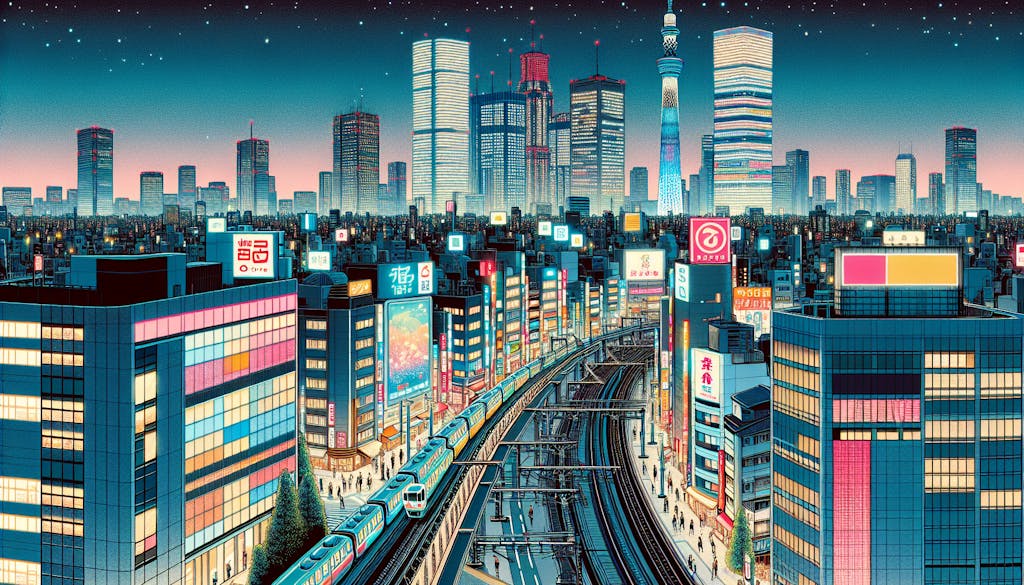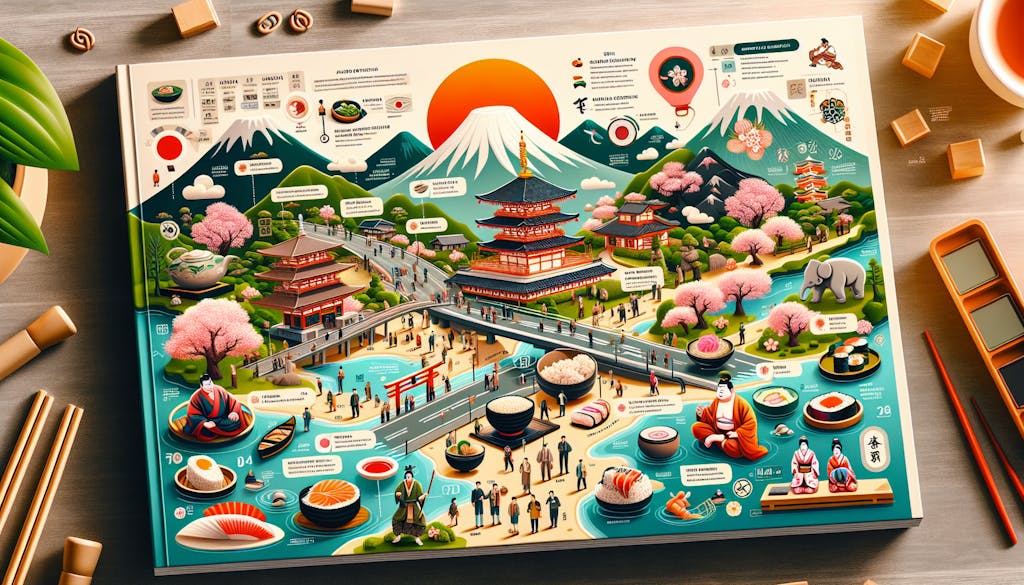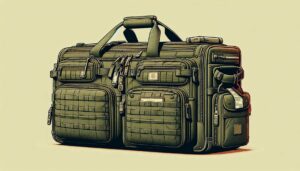Japan has always been a tourist when it comes to the Japanese fuse of the ancient and modern., with becasue country’s mix of centuries-old tradition and CT scansvalue. Japan — from the majestic beauty of Mount Fuji to Tokyo’s busy Shibuya Crossing, this country offers something for everyone. But, going to the land of morning calm too might be a bit hard particularly for first-time travelvaisaitors. Don’t worry! Yoshino Aoki This article takes you through everything you should know about traveling Japan, from preparation to methods to save cash while venturing in the country. Let’s start our adventure!
1. Picture1: Japan – A Dream Destination
1.1. Different to Western Culture
Think about strolling through a small alley in Kyoto. A geisha in glorious kimono gliding into an ochaya (tea house), on the one hand. Meanwhile, on the other side… a bunch of Harajuku-style kids are busy with their selfie stick. It is a rather unusual situation in Japan, where old traditions are combined with modern infrastructure.
Not only the conventional clothing and philosophically sound tea ceremonies or anything that speaks about Japanese culture is unique. In addition, a social lifestyle that respects harmony, discipline and nature becomes part of an attraction to tourists. And of course, the famous Japanese hospitality — an “omotenashi” style where all visitors feel like a VIP.
1.2. Blending Tradition and Modernity
Japan is one of the exceptions in this world that was able to keep its cultural heritages, and at the same time giant advances were possible. Oh, and where else do you see a Shinto shrine from the 1st Century BC rudely next to an Alien Colony (Twisted Carbon Fiber Exoskeleton)?
Such a merger provides the tourists with an exceptional experience. All participants will have the opportunity to begin their day with a traditional Japanese tea ceremony and end it at Robot restaurant in Shinjuku, dinner included. Get into a yukata (summer kimono) while looking around the Electronic City, Akihabara? That is the Japan effect nobody can resist!
2. Preparation Before Departure

2.1. Required Travel Documents
Before you travel to Japan, ensure that all your documents needed for travelling are prepared. This is how it works: you must has a pasport valid 6 months from the date of arrival for Indonesian tourists. Fortunately, in 2014 the Japanese government began exempting visa requirements for short visits (15 days) to passpoert holders of Indonesia. And remember, this is just for tourist visits! Even though you are expected to stay longer or for other reasons (like business, study ), and so on., yet in a need of making an application for the visa.
PRO TIP: Despite being visa-free, still have your supporting documents ready (return tickets, proof of accommodation and sufficient funds) This could help confirm you are a genuine tourist to Japanese immigration officers.
2.2. Best Time to Visit Japan
So, when is the best time to go Japan? Depends on what you want to take pleasure in, right? But here’s the scoop:
1. Spring (March-May): Everyone loves Spring! The weather is pleasant as well and cherry blossoms are nearly at full bloom! However, this is also high season so prices go through the roof and popular destinations become very crowded.
2. Summer (June-August): Excellent for Festival-goers In that season, many matsuri (traditional festivals) are held. However, expect scorching heat and heavy rain.
3. Fall (September-November): Another golden opportunity! The leaves turn red and gold, adorning a beautiful view. The temperature is perfect too.
4. Winter (December-February): Best for snow-bunnies who love to ski! Furthermore, there are beautiful illuminations in the city town. It is chilly though, so do be warned!
My two cents? Spring (if you can deal with the crowds and slight price increase is your safest best). However, you are looking for less crowded time and reasonable prices consider coming late autumn or early winter.
2.3. Essential Packing List
Moving on to a part of the process that often leads people onto stress-town, packing! Or overpack or miss essentials. The Ultimate Packing List for Japan
1. Clothes:
Clothes to Layer (Japan 4 season, And weather changeable)
– Light jacket (AC makes even summer indoors bit cold)
– Comfortable shoes. You will walk bunches in Japan!
– Socks (for entering into the traditional house/ temple)
2. Gadgets:
– Smartphone & Charger (download Google Maps + Translator app)
Plug adapter (Japan uses Type A, voltage 100V)
Power bank (sweaaarrr you’ll surely gonna need this)
3. Toiletries:
• Sunscreen (especially in the summer)
– Deodorant (not really available in Japan)
Hand sanitizer (most toilets are extremely clean in Japan, but there is often no soap)
4. Others:
But the store only gives me small plastic bags – Japan is all about separating garbage
Pocket Wi-Fi or SIM card (this can also be ordered online before flying out)
Cash (and lots of places still only take cash in Japan)
Travel Hack: Make room for souvenirs in your luggage! If you visit Japan, there are a lot of interesting snacks and items that will want to buy.
3. Transportation in Japan

3.1. Should You Get A JAPAN RAIL PASS?
Alright, so here is the famous Japan Rail (JR) Pass. All JR (Japan Railways) Lines of Japan「全国ジャパンレールウェイーズ乗車券」Quantanational Japan(Railwayziyou syaken)Limited-Time Offergúnpeisunchinyuudo 期間限定 offer【お気に入り】 Sounds amazing, right? But is it really worth it?
Well, it depends. If you are going to be traveling between cities — utilizing the shinkansen (bullet train) — then yes, it is good! To give an instance, if you are doing a Tokyo-Kyoto-Osaka route spanning 1 week then purchase of the 7-days JR Pass would ultimately be cheaper than buying single tickets
Note that the JR Pass is not valid for all kind of trains. Likewise, no using it for the private non-JR company Tokyo subway trains.
My advice? Take care of the route you will move first, calculate and compare with each individual ticket price before deciding to buy a JR Pass. Online there are many calculators that help to understand if the JR Pass will be convenient on your next trip or not.
TIP: If you are only spending time in one city or a particular area, there may also be regional passes that could work out to be more cost-effective. As an example is the Tokyo Wide Pass for the territory of Tokyo and environs.
3.2. Navigating the Subway System
The subway system in Japan, Tokyo or other big cities often confuse newbies the most. The route map looked as complicated and tangled (although not tasty) like instant noodles. Don’t worry, the system is very systematic after all!
Tips for Navigating the Subway System in Japan
1. Get apps: The use of side programming as Hyperdia, and your Google Maps can help you plan. These are lifesavers!
2. Watch out for colors and numbers: Every line has a color with respective number. For example, the Yamanote Line in Tokyo is coloured light green and its number is JY.
3. Look at the direction of destination: Ensure you enter into right platfrom. Usually there is an infoboard which depicts the names of Pedestrian shelters to be cross.
4. Purchase an IC Card: These cards can be used on nearly every form of public transportation in the bigger Japanese towns such as Pasmo or Suica Say goodbye to paper tickets
5. Stand on the left: If you’re not walking on escalators, stand to the left. It is an unofficial local law in this matter.
By all means, this is Japan so trains generally run on time but if you have an important appointment or meeting remember to get there early in case your train isn’t as punctual out of courtesy. During the peak hours, it may get mixed with crowd and you might have to wait for another train.
3.3. If all else fails
Japan navigate mainly by trains but there are also some alternatives you should consider.
1. Bus: Buses are cheaper than trains, but they can take longer. Ideal for places that are not connected with trains. Also they use the bus to go very close to sightseeing spots, well in some cities it happens like everywhere around Kyoto.
2. Taxi: A little pricey but this may be your best bet, especially if you are in a group or have lots of luggage. In Japan, taxis have doors that are automatic and opened or closed by the driver!
3. In Japan, bicycle: Most Japanese cities have excellent bike lanes. You can rent a bike to roam around near by places. It’s eco-friendly too!
4. Shinkansen: This bullet train is the perfect option for intercity travel. Super fast and comfortable!
5. Rental car. May be good if you wish to venture in the countryside sometimes
4. Cuzton Accommodation: Old meets new
4.1. Ryokan: One Touch of Traditional Japan
To really indulge in an authentic Japanese experience, perhaps you should consider staying at a ryokan. What’s a ryokan? So, a ryokan is an old traditional Japanese style inn that date back to the Edo period. Just imagine sleeping on a futon spread over tatami floor, zipping yourself up into the comfy yukata (casual kimono) robe and looking out of your room window onto that picturesque Japanese garden. Exciting, right?
But wait, there’s more! While Ryokan also renders Onsen(hot spring baths) and Kaiseki ryōri(luxurious traditional Japanese cuisine). just keep in mind, prices for a ryokan stay might be even higher than when booking into a regular hotel. However, I can assure you that it is an experience worth every yen!
Expert tip: Look for ryokans in small towns or remote mountain areas to stay within budget. They tend to be more budget, and a good job is that you get to spend time in amazing natural scenes!
4.2. Capsule Hotel Capsules: A Japanese Experience.
Unlike ryokans, which appeal to fans of traditional Japan, capsule hotels cater for those who want a taste of the future. What about sharing quarters so tight you have barely enough room to lie down? That would be what’s known as claustrophobic sleeping. Maybe. It is just a really cool and ‘Japan’ experience.
The first capsule hotels were built for salarymen who has to work late and missed the final train, hence needed place cheap way to spend night. However, now lots of tourists are inquisitive and want to taste it as well. The facilities? Sometimes there’s a small TV, phone charger and even Wi-Fi within the capsule.
Just a word of warning though, most traditional capsule hotels are for men. And do not be afraid, a majority of these are coed and some even just for women.
4.3. Budget Accommodation for longer stays – Airbnb & Rental Apartments
FAmilies staying slightly longer in japan or with larger groups of family/friends looking to stay together, renting an apartment through airbnb ot similar is a great option Why? One, oftentimes it is less expensive than hotels, especially if you stay a week or more. The second option is to cook for yourself, which is an amazingly good way of saving money in Japan (if you do not want your wallet cry every day out!).
In addition, when you rent an apartment it helps to set the feeling of actually “living” in japan as opposed to just being on a vacation here. …while getting your shopping at the local supermarkets, trying out neighbors’ hot-pots and pretty much experiencing a lifestyle which is in most general sense how Japanese people live.
Some more consideration is required, though:
1. If it is legal in that area: Some cities of Japan have some kind restrictions for Airbnb.
2. Area: Near the station or bus stop
3. Many Airbnb hosts in Japan offer their guests free pocket Wi-Fi. This can be a very big money saver!
5. Japanese Cuisine beyond Sushi
5.1. Must-Try Japanese Dishes
So we all are aware of the legendary sushi and ramen Japan has. But seriously.. Japanese food is not just that. Below, some essential things you have to taste:
1. Okonomiyaki: A savory pancake that has different ingredients in it. Processed with VSCOcam In Osaka, you gotta eat this!
2. Takoyaki, octopus in small balls. Sounds weird, tastes amazing!
3. Yakiniku: Korean BBQ… the Japanese kind. Perfect for meat lovers.
4. Udon: A type of thick wheat flour noodle, pleasant to the taste during cold seasons
5. From ice cream and cakes —matcha flavor reigns in Japan!
Pro-tip: these are vending machine restaurants, give one a try. The manner in which you order food is different (by machine) but the food it pretty good!
5.2. Dining Etiquette in Japan
In Japan, how you eat is just as important—or arguably more so—as what you are putting in your mouth. While we hope the answer to that question is “both”, there are do’s and don’ts:
Do’s:
・”Itadakimasu” (before meal) and “Gochisousama deshita”(after meal).
6—Wipe your hands with this tissue
Read more: -Slurp your ramen It is not rude, it’s a chef compliment
Don’ts:
– Do not put chopsticks in rice like this. It reminds people of a funeral
– Don’t eat while walking. It’s considered rude.
– Don’t give tips. No joke, it can be really insulting!
5.3. Japan: The Halal Dilemma
For Muslims, don’t worry! It has become much easier to find halal food in Japan than it was a few years ago. In particular in major cities and areas frequented by tourists, many restaurants are offering Halal menus.
Some tips:
1. Get the Halal Gourmet Japan and/or HalalMinds apps.
2. Find the right country-specific Indian and/or Middle-Eastern restaurant. They often serve halal food.
3. Products in convenience shops like “free from alcohol” & pork.
4. Just say “Kore wa hararu desuka?” when in doubt. (Is this halal?)
Think about this, many Japanese foods are by nature pork and alcohol free so even if a place does not specifically tout themselves as halal. But always feel free to double check!
6. Must-Visit Destinations

6.1. Tokyo, the epitome of modernity
The vibrant city that is Tokyo, the capital of Japan will never sleep. You can almost taste the wonderful combination of tradition and future trends. Must-visit spots include:
1. Shibuya Crossing — the busiest intersection on Earth. Best Place to Embrace Tokyoasse TheTokyu atmosphäre!
2. Harajuku: Fashion paradise. You will find everything from kawaii style to avant-garde here.
3. The oldest temple in Tokyo, Senso-ji Temple. A piece of old Japan in the heart of a busy city.
4. 12) Tokyo Skytree: Room with a view of the city of Tokyo
5. Tsukiji Outer Market (seafood culinary heaven even if the main fish market has moved)
Tip: Purchase a Tokyo Metro pass to save money while traveling around the city. Oh, and also explore the various neighborhoods-they all have different vibes!
6.2. In Kyoto, Following in Old-timey Footsteps
As the former capital of Japan, Kyoto is often a wonderful display case for obtaining a good sense about regular Japanese culture. 5 things you can’t miss:
1. Kinkaku-ji (Golden Pavilion) A temple building shining in gold
2. Arashiyama Bamboo Grove: Stroll through this bamboo forest that you see continuously on Instagram.
3. The iconic red torii gates of Fushimi Inari Shrine.
4. Geisha (or maiko, geisha apprentices) are seen at Gion District best.
5. Nishiki Market: Known as Kyoto’s Kitchen a traditional market.
Ps: In Kyoto bicycle ride is so cool. Chances are very likely that you can rent your bikes from somewhere round Kyoto Station.
6.3. Osaka: Mecca of food tourism and entertainment
The city has the nickname “Japan’s kitchen” and a motto that they describe as takoyaki, Apparently it means literally eat until you collapse. So the food here is gonna be great! However, Osaka is not only about food:
1. Dotonbori – A crazy vibrant area with neon lights and street food.
2. Classic Osaka Castle with its stunning grounds, especially so in cherry blossom season.
3. Universal Studios Japan: An attraction for all ages.
4. 2) Kuromon Ichiba: a market that has existed since the Edo period. Perfect for food hopping!
5. Shinsekai: A retro area famous for its many kushikatsu restaurants (skewered & deep fried food).
Expert Tip: The Osaka Amazing Pass How to Buy It will give you a free entrance to most tourist attractions and unlimited access to public transportation!






